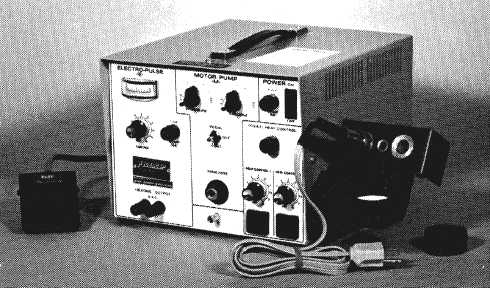2-7
Figure 2-1.—Repair station power unit.
"Spike free" power switching for attached electrical hand tools to eliminate damage to
electrostatic discharge components.
Abrading, milling, drilling, grinding, and cutting using a flexible shaft, rotary-drive machine.
This allows the technician to remove conformal coatings, oxides, eyelets, rivets, damaged board
material, and damaged platings from assemblies.
Lap flow solder connections and thermal removal of conformal coatings.
Resistive and conductive tweezer heating for connector soldering applications.
Thermal wire stripping for removing polyvinyl chloride (PVC) and other synethetic wire
coverings.
Power Source
The basic unit houses the power supply, power level indicator, motor control switch, hand tool
temperature controls, air pressure and vacuum controls with quick connect fittings, positive ground
terminal, the mechanical power-drive for the rotary-drive machine, and a vacuum/pressure pump. A two-
position foot pedal, to the left of the power unit in the illustration, allows hand-free operation for all
ancillary (additional) handpieces. The first detent on the pedal provides power to the voltage heating
outputs. The second detent activates the motor drive or vacuum/pressure pump.
Handpieces
The handpieces used with the power unit are shown in figures 2-2 and 2-3. The lap flow handpiece,
view (A) of figure 2-2, is used with the variable low-voltage power source. This handpiece allows
removal of conformal coatings, release of sweat joints, and lap flow soldering capability. (Lap flow
soldering will be discussed in topic 3.) The thermal wire stripper in view (B) is used to remove insulation
from various sizes of wire easily and cleanly.


